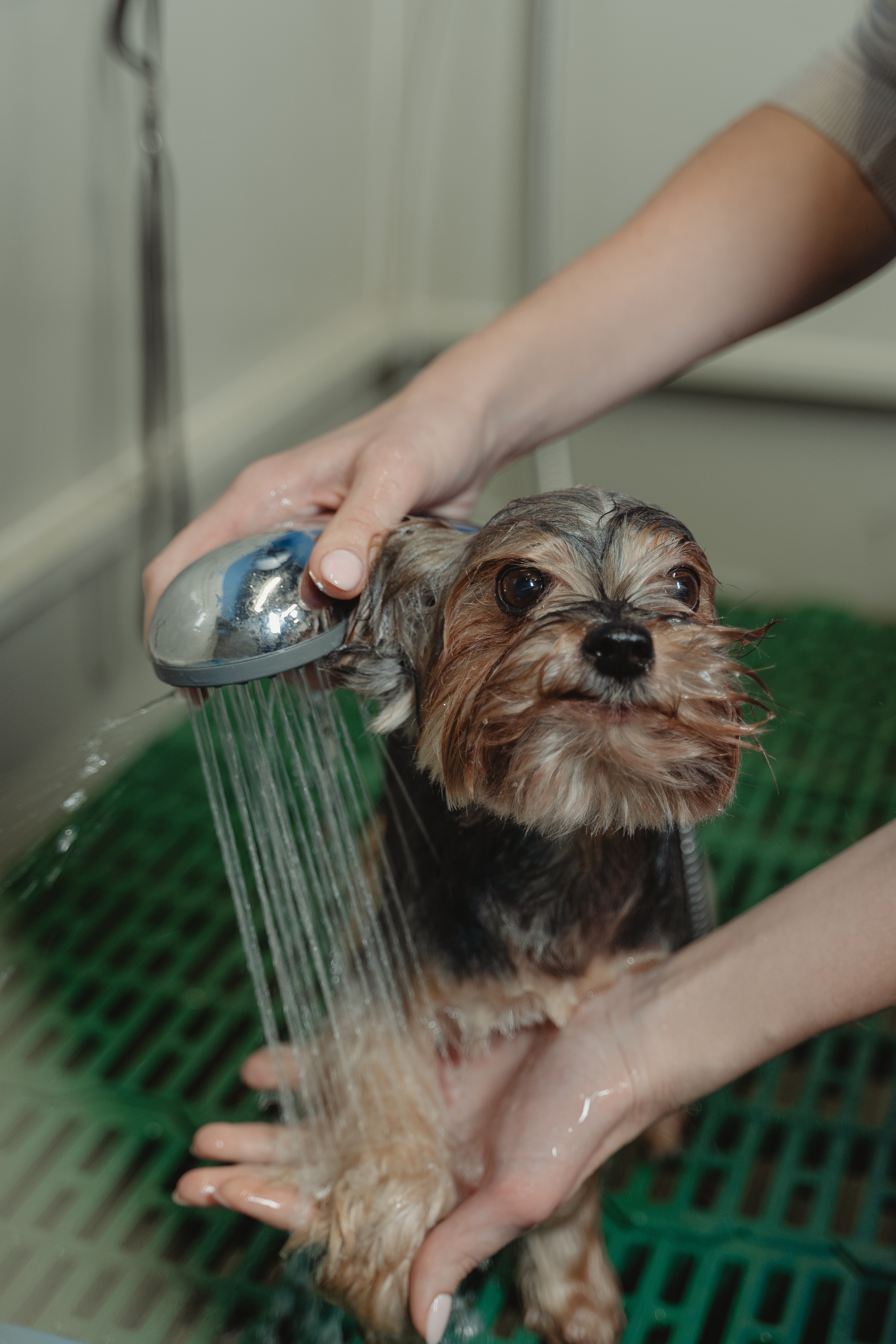Introduction
As pet owners, we cherish the unconditional love and companionship our furry friends bring into our lives. As responsible pet parents, it is crucial to ensure their safety and well-being in every aspect of daily living. One often overlooked area is our choice of cleaning and household products. Surprisingly, many conventional cleaning agents contain harmful chemicals that can pose significant risks to our beloved pets.
Importance of Using Pet-Safe Cleaning Products
Our pets share our living spaces, and they are much more vulnerable to the effects of household cleaning products than we might realize. When pets come into contact with or ingest harmful chemicals found in traditional cleaning agents, they can experience a range of health issues, from mild irritations to severe poisoning.
Common cleaning agents such as bleach, ammonia, and phenol are known to release toxic fumes that can be harmful when inhaled by pets. Additionally, some products contain chemicals that can be absorbed through a pet’s skin, leading to skin irritations and other health problems. Moreover, curious pets may accidentally ingest these substances, causing stomach upset, vomiting, diarrhea, and, in extreme cases, life-threatening conditions.
Common Household Products Harmful to Pets
It’s essential to be aware of the most hazardous household cleaning products to protect our furry companions. Some typical products that can be harmful to pets include:
- Bleach: A powerful disinfectant used for cleaning, but its fumes and direct contact can be irritating and toxic to pets.
- Ammonia: Found in various window cleaners and degreasers, ammonia can cause respiratory issues in pets.
- Phenol: Commonly used in disinfectants and furniture polishes, phenol is highly toxic to pets and can cause severe internal organ damage.
- Mothballs: Contain toxic chemicals that can lead to seizures, liver damage, and even death when ingested.
- Antifreeze: Often found in garages, antifreeze is deadly to pets even in small amounts, causing rapid kidney failure.
While these are some of the more well-known harmful substances, there are numerous other chemicals present in household cleaners that can be equally dangerous for our four-legged friends.
Purpose of the Article
The purpose of this comprehensive guide is to educate pet owners about the risks associated with traditional cleaning products and to offer safer alternatives that are effective and pet-friendly. We will explore natural and non-toxic cleaning agents that can be easily made at home, as well as commercially available pet-safe cleaning products. By adopting these pet-safe cleaning practices, we can create a healthier and safer environment for our pets while maintaining a clean and hygienic home. Together, we can take small yet impactful steps to safeguard our pets’ health and happiness.
Understanding the Risks
Overview of Toxic Chemicals Found in Cleaning Products
To fully comprehend the potential dangers of household cleaning products to our pets, it’s essential to understand some of the toxic chemicals commonly used in these agents. Many cleaning products contain volatile organic compounds (VOCs) such as benzene, formaldehyde, and toluene. These compounds can evaporate into the air and, when inhaled by pets, irritate their respiratory systems, leading to coughing, sneezing, and difficulty breathing.
Additionally, some cleaning agents contain harsh solvents like isopropyl alcohol and ethylene glycol, which can cause skin irritation and damage if pets come into direct contact with them. Furthermore, the ingestion of cleaning solutions containing these chemicals can result in gastrointestinal upset and, in severe cases, systemic toxicity.
Potential Health Effects on Pets
- Respiratory Distress: Inhaling fumes from certain cleaning products can cause respiratory distress in pets, particularly in those with pre-existing respiratory conditions like asthma.
- Skin Irritation: Contact with cleaning agents, especially those containing strong chemicals, can lead to skin irritation and chemical burns on a pet’s paws, nose, and other exposed areas.
- Gastrointestinal Issues: Ingesting cleaning products can cause gastrointestinal problems, such as vomiting, diarrhea, and loss of appetite.
- Organ Damage: Some toxic chemicals can lead to liver and kidney damage when absorbed into a pet’s bloodstream, potentially leading to long-term health issues.
- Neurological Symptoms: Severe poisoning from certain cleaning agents can result in neurological symptoms like seizures and tremors.
Hidden Dangers of Certain Ingredient
Apart from the well-known toxic chemicals, there are other ingredients in cleaning products that might not be as visibly harmful but can still pose risks to our pets. For example, certain essential oils, which are often used in natural cleaning products, can be toxic to pets when ingested or absorbed through their skin. It is vital to be cautious and research each ingredient before using any cleaning product around pets.
As responsible pet owners, it is our duty to ensure a safe and pet-friendly living environment for our beloved companions. By being aware of the potential risks associated with conventional cleaning products, we can take proactive steps to protect our pets from accidental exposure to harmful chemicals.
In the next section of this guide, we will explore and identify pet-safe cleaning alternatives that are free from toxic substances and effective in maintaining a clean and safe home for both pets and their owners. Let’s embark on this journey toward a healthier and happier life for our furry family members.
Identifying Pet-Safe Cleaning Alternatives
Now that we are aware of the potential risks posed by conventional cleaning products, it’s time to explore and embrace pet-safe cleaning alternatives. Fortunately, there are numerous natural and non-toxic options available that can effectively clean our homes while ensuring our pets’ safety.
Natural and Non-Toxic Cleaning Agents
- Vinegar and Water Solution: A simple yet powerful cleaning agent, a mixture of vinegar and water is effective in tackling various household cleaning tasks. It can be used to clean windows, countertops, floors, and more. The acidic properties of vinegar make it an excellent antibacterial and antifungal agent.
- Baking Soda for Scrubbing: Baking soda is an excellent mild abrasive that can be used for scrubbing surfaces, removing stains, and deodorizing. When combined with water or vinegar, it creates a potent cleaning paste that is safe for pets.
- Lemon-Infused Cleaners: Lemon contains natural antibacterial properties and leaves a fresh scent. Lemon peels can be soaked in vinegar for a few weeks to create a lemon-infused cleaner that is effective and safe for pets.
Commercial Pet-Safe Cleaning Products
- Reading Labels and Understanding Ingredients: When selecting commercial cleaning products, look for labels that explicitly state they are pet-safe or eco-friendly. Avoid products with harsh chemicals, artificial fragrances, and toxic additives.
- Certified Eco-Friendly Cleaning Brands: Some cleaning brands have certifications from recognized organizations that endorse their products as safe for pets and the environment. Look for labels such as “Green Seal” or “EcoLogo” to ensure you’re choosing pet-friendly options.
Homemade Pet-Friendly Cleaning Solutions
Creating your own pet-friendly cleaning solutions is not only cost-effective but also allows you to have complete control over the ingredients. Here are some simple DIY cleaning solutions you can make at home:
DIY All-Purpose Cleaner
- Mix equal parts of water and white vinegar in a spray bottle.
- Optionally, add a few drops of pet-safe essential oil, such as lavender or peppermint, for a pleasant scent.
Pet-Safe Floor Cleaners
- For hardwood or tile floors, use a mixture of water and vinegar (1:1 ratio).
- For carpet cleaning, sprinkle baking soda liberally over the carpet, let it sit for a few hours, and then vacuum thoroughly.
Non-Toxic Oven and Stove Cleaning
- Create a paste using baking soda and water. Apply it to the oven or stove, let it sit for a few hours, and then scrub away the grime with a sponge.
Safe Bathroom and Kitchen Disinfectants
- Use the vinegar and water solution to clean bathroom surfaces and kitchen countertops.
- Add a little baking soda to the mixture for extra scrubbing power on tough stains.
By incorporating these pet-safe cleaning alternatives into our daily routines, we can ensure that our homes are not only clean and hygienic but also safe havens for our furry companions. In the next section, we will explore pet-safe carpet and upholstery cleaning methods, as well as safe pest control options for a complete pet-friendly home cleaning experience. Let’s continue our journey toward creating a pet-safe haven for our beloved pets.
Pet-Safe Carpet and Upholstery Cleaning
Carpets and upholstery can harbor dirt, pet hair, and allergens, making regular cleaning essential for a clean and healthy living environment. However, many conventional carpet and upholstery cleaners contain chemicals that can be harmful to our pets. Let’s explore some pet-safe cleaning methods and products:
Risks Associated with Conventional Carpet Cleaners
Traditional carpet cleaning products often contain strong chemicals and synthetic fragrances that may irritate your pet’s respiratory system or cause skin reactions when they come into contact with the treated surfaces. Moreover, the residue left behind by some carpet cleaners might be harmful if licked or ingested by curious pets.
Natural Carpet Cleaning Methods and Products
- Steam Cleaning with Water and Vinegar: Steam cleaning is an effective and pet-safe method for deep cleaning carpets. Instead of using commercial cleaning solutions, opt for water and vinegar as the cleaning agent. The steam lifts dirt and stains, while vinegar helps to disinfect and deodorize.
- Baking Soda and Essential Oils for Odor Removal: For carpets that need a refresh or to tackle pet odors, sprinkle baking soda liberally over the carpet, focusing on areas where your pets spend the most time. Let the baking soda sit for at least 30 minutes (or overnight for stubborn odors) and then vacuum thoroughly. You can also add a few drops of pet-safe essential oils to the baking soda before sprinkling for a pleasant aroma.
Safe Pest Control for Pet Owners
When it comes to pest control, it’s crucial to prioritize pet safety and avoid using harsh chemicals that can harm our furry friends. Here are some pet-safe pest control methods:
Harmful Effects of Chemical Pesticides on Pets
Chemical pesticides, such as those used to control fleas, ticks, and other insects, contain toxins that can be harmful to pets. Direct exposure or ingestion of these substances can lead to adverse reactions, ranging from mild skin irritation to more severe neurological issues.
Natural Alternatives for Flea and Tick Control
- Diatomaceous Earth (DE): Food-grade diatomaceous earth is a natural and pet-safe option for controlling fleas and ticks. Sprinkle a thin layer of DE on pet bedding and carpeted areas, and leave it for a day or two before vacuuming it up. DE works by dehydrating and killing the pests.
- Essential Oil Sprays: Certain essential oils, such as lavender, lemongrass, and eucalyptus, have natural insect-repelling properties. Mix a few drops of pet-safe essential oil with water in a spray bottle and lightly mist your pet’s fur and bedding to help repel pests.
Pet-Safe Mosquito and Insect Repellents
Keep your pets safe from mosquito bites and other insects when spending time outdoors. Use pet-friendly mosquito and insect repellents that do not contain DEET or other harmful chemicals.
By adopting these pet-safe carpet cleaning and pest control methods, we can maintain a clean and pest-free environment while ensuring our pets’ well-being. In the next section, we will discuss the safe storage and disposal of cleaning products to further enhance the safety of our homes for our beloved pets. Let’s continue on our journey to create a truly pet-friendly living space.
Safe Storage and Disposal of Cleaning Products
Keeping cleaning products out of reach and properly storing them is essential to prevent accidental pet exposure. Additionally, responsible disposal of hazardous materials ensures the safety of both pets and the environment. Here are some guidelines for safe storage and disposal of cleaning products:
Proper Storage to Prevent Pet Access
- High and Secure Shelving: Store cleaning products on high shelves that pets cannot access. Use secure cabinets or latches to prevent curious pets from opening them.
- Pet-Proofing Cleaning Closets: If you have a designated cleaning closet or storage area, consider installing child-proof locks to prevent pets from gaining access.
- Avoiding Floor-Level Storage: Refrain from storing cleaning products at floor level, as pets may easily knock them over or chew on containers.
Pet-Proofing Cabinets and Cleaning Closets
- Secure Chemical Containers: Ensure cleaning product containers are tightly closed and properly sealed to prevent leaks and spills.
- Labeling and Organizing: Clearly label all cleaning products and keep them organized, making it easier to find what you need without leaving hazardous items unattended.
Environmentally-Friendly Disposal of Hazardous Materials
- Recycle Empty Containers: When cleaning product containers are empty, rinse them thoroughly and recycle them following your local recycling guidelines.
- Household Hazardous Waste Collection: Dispose of old or expired cleaning products through your local household hazardous waste collection programs. Avoid pouring chemicals down the drain or throwing them in the trash.
- Consider Eco-Friendly Alternatives: When purchasing cleaning products, choose those with eco-friendly and pet-safe ingredients. Environmentally-friendly options are less harmful to both pets and the environment.
By adopting these storage and disposal practices, we can significantly reduce the risk of accidental pet exposure to harmful cleaning products and contribute to a safer and healthier living space for our furry companions.
Educating Others and Raising Awareness
Empowering others with knowledge about pet-safe cleaning practices is a crucial step in creating a pet-safe community. Share the information you’ve learned with friends, family, and fellow pet owners. Engage in discussions, participate in online forums, or host local events to raise awareness about the importance of using pet-safe cleaning products.
Conclusion
Our pets are precious members of our families, and their safety and well-being are paramount. By opting for pet-safe cleaning alternatives, natural methods, and responsible storage and disposal, we can create a clean, healthy, and pet-friendly home environment.
Let us all take conscious steps to ensure our cleaning practices prioritize the safety of our beloved pets. Together, we can embrace a pet-safe lifestyle that not only benefits our furry friends but also makes a positive impact on our environment. Here’s to a cleaner, safer, and happier life for both pets and pet owners alike.









